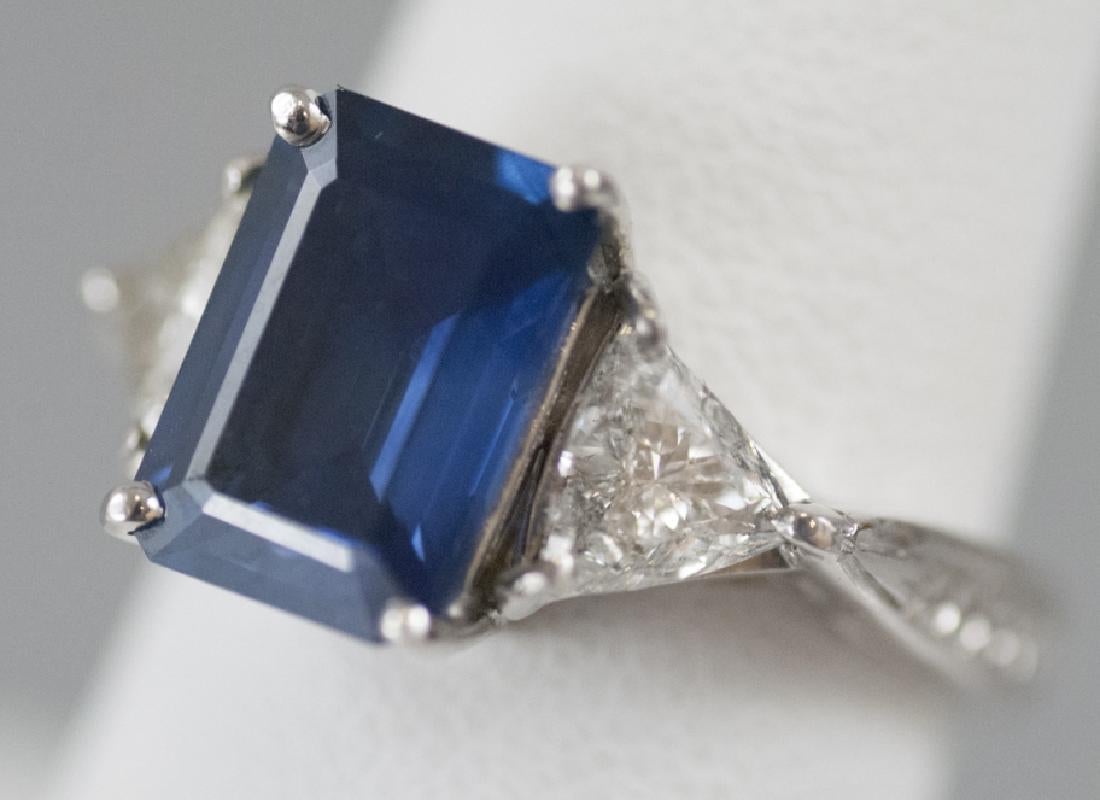Sapphire Symbolism
Beautiful blue colors and the star stone effect have influenced sapphire symbolism through the ages. Learn more about the legends surrounding this gem.
3 Minute Read
What's the Real Color of Sapphire?
Both sapphire and ruby belong to the corundum mineral family and share exceptional hardness and durability. Both make excellent jewelry stones. However, by gemological definition, gem-quality red corundum is ruby. Gem-quality corundum of any other hue, including colorless, is considered sapphire.
Corundum is an allochromatic gemstone. That means it gets its color from trace elements in its chemical structure. Without any of these impurities, it would be colorless. Chromium traces give corundum a red color (rubies), while a host of other trace elements give corundum a broad palette of colors (sapphires).
So, if sapphire symbolism appeals to you, you can indulge a wide range of colors or stick to traditional blues.
Classic Sapphire Symbolism
People have long connected celestial blue sapphires with the planet Venus. By extension, sapphires also represent Friday, the day dedicated to Venus. Springtime also falls under sapphire's symbolic rubric. In differing zodiacal systems, this gemstone covers both Taurus and Gemini.
The Ancient Greeks associated sapphire with Apollo. Petitioners often wore the gem while consulting oracles, such as the one at Delphi. Supposedly, sapphire taps the power of the "third eye" and makes clear oracular pronouncements otherwise too difficult to hear or understand. Necromancers sought this stone for its purported ability to influence spirits.
Violet sapphires represent the number three as well as old age.
Social Harmony and Sapphire Symbolism
Royalty often wore sapphires for dual purposes. Not only did the stone reputedly attract wealth, it also purportedly protected the wearer from envy and infidelity. Traditionally, people attributed to this gem the power to bring harmony between lovers as well as peace between adversaries. In addition, sapphires were said to put one at ease in social engagements and banish fraud. Those involved in legal matters could benefit especially from the stone's powers. Of course, provided they were innocent!
Sapphires and Well-Being
In times past, the belief that sapphires offered an antidote to poison was quite popular. Supposedly, the stone increased the wearer's overall strength and health, thus warding off illnesses and nullifying poisons. Many believed sapphires aided healing.
An old rhyme about sapphires goes:
If on your hand this stone you bind,
You in Taurus born will find
'Twill cure diseases of the mind,
The Sapphire.
In the Middle Ages, this healing power was ascribed especially for the eyes. Interestingly, this notion may have originated with an actual Ancient Egyptian remedy. In The Curious Lore of Precious Stones, the mineralogist George Kunz notes that the Egyptians may have used a copper oxide known as lapis Armenus in an eyewash. Its astringent properties may have helped certain eye conditions. However, this efficacious ingredient was later replaced with lapis lazuli, another blue material considered more valuable. By the Medieval Era, the supposed powers of lapis lazuli were transferred to another, even more valuable blue gem, the sapphire.
Keep in mind that many historical references to sapphires and their powers, including the sapphire in the breastplate of Aaron, may actually refer to lapis lazuli and its lore.
Star Sapphire Symbolism
For those seeking talismans, star sapphires surpass even regular sapphires in reputed mystical power. Such stones show a star created by inclusions within the gem, an effect known as asterism. The celebrated explorer Sir Richard Francis Burton traveled the Orient with a large star sapphire, known as an asteria. He found it brought him much luck, as the stone's fame preceded him in his travels. Many believed simply viewing the talisman meant good fortune. Thus, it brought him prompt service and extra favors from those he visited. Aware of its prestige, Sir Burton rewarded those who displayed such courteousness by allowing them to view his talisman.
In the past, some Christians referred to star sapphire as the "Stone of Destiny." They associated the star's three crossbars with Faith, Hope, and Destiny. (Corundum star stones have three crossbars and six rays, while other species, like garnets, show stars with two crossbars and four rays). They used such talismans as travelers' guides and as protection from illnesses and ill omens. Supposedly, the gems warded off the Evil Eye and scared away devils. Some believed the influence of asterias remained even if they left the wearer's possession.
Fara Braid
International Gem Society
Related Articles
Sapphire Value, Price, and Jewelry Information
An Interview with Sapphire Expert Jeffery Bergman
Ruby and Sapphire Survey: Where Do You Draw the Line?
The History of the Verneuil Method: Pioneering Lab-Grown Crystal Technology
Latest Articles
800 Years of Mogok: A Celebration in Tenuous Times
What is the Average Gemstone Faceting Yield?
Pyroxmangite Value, Price, and Jewelry Information
How to Identify Emerald Simulants and Synthetics
Never Stop Learning
When you join the IGS community, you get trusted diamond & gemstone information when you need it.
Get Gemology Insights
Get started with the International Gem Society’s free guide to gemstone identification. Join our weekly newsletter & get a free copy of the Gem ID Checklist!
